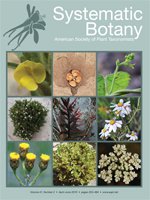Specimens of a new fruit genus and species, Alatonucula ignis, from the early Eocene Laguna del Hunco flora of Chubut, Patagonia, Argentina, have characteristics consistent with assignment to Juglandaceae. Each fossil fruit consists of a nutlet with an attached wing that varies from unlobed to trilobed. One specimen clearly shows that the nutlet has a single locule partially subdivided into four chambers; its counterpart contains a four-lobed locule cast. The basally partitioned locule with lobed seed indicates that Alatonucula can be placed within Juglandaceae; the overall structure of the fruits suggests affinities to subfamily Engelhardioideae, which typically have fruits consisting of a nutlet attached to a trilobed wing. Parsimony analyses of a morphological matrix for extant and fossil Juglandaceae revised from a previously published study demonstrate that 1) Alatonucula groups with Engelhardioideae; and 2) Paleooreomunnea, an Eocene North American taxon that includes a fruit type with a trilobed wing, is within crown-group Engelhardioideae. Alatonucula, along with fossil juglandaceous pollen from the Paleogene of Patagonia, indicates that Juglandaceae may have had an unexpectedly early presence in South America. Furthermore, these fruits represent a Laurasian biogeographic signal in the Laguna del Hunco flora, which contrasts with the predominantly Australasian signal highlighted in previous studies.
How to translate text using browser tools
28 June 2016
Fruits of Juglandaceae from the Eocene of South America
Elizabeth J. Hermsen,
María A. Gandolfo
ACCESS THE FULL ARTICLE

Systematic Botany
Vol. 41 • No. 2
June 2016
Vol. 41 • No. 2
June 2016
Argentina
biogeography
Chubut province
Laguna del Hunco
Patagonia
phylogeny




